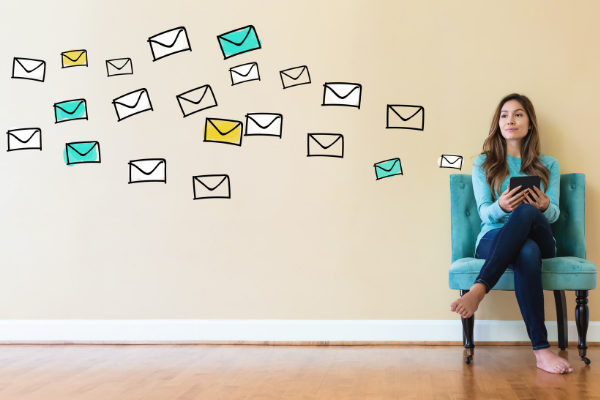Insights
INSIGHTS
All Topics
My Account
How to get more people reading your emails
02 Feb 2021by Helen Olszowska
We look at how charities can stay ahead of the changes affecting email marketing
Changes to privacy best practices are causing email marketers to re-think how they organise and particularly how they measure the success of their programmes.
General Data Protection Regulation (GDPR) was launched in Europe in 2018, but it has had a global influence on how tech companies approach the issue of data privacy online. Apple is the latest and most influential company to overhaul its approach to privacy and many marketers are not happy about it.
In the latest update, iOS 15, launched in September 2021, email privacy updates are making waves in the marketing community. One of the key features launched allows users to make a choice about their mail privacy protection. They are presented with a choice: "protect mail activity" or "don’t protect mail activity".
If you choose ‘protect’ Apple will download all email content you receive to a proxy server for security and privacy. The download will trigger the sender’s email tracking code and mark the email as opened before it has been opened.
This update only affects Apple mail users, so it’s worth checking what proportion of your mailing list uses it – it could be as many as 40%.
In practice, as privacy updates begin to roll out across major tech companies, the importance we place on different email metrics is changing..
Charities can adapt to the changing world of email marketing by generating fresh email sign ups, nurturing them and focussing on keeping them engaged with a variety of content and calls to action.
Make joining your list easy and worthwhile
How easy is it for someone to opt-into receiving emails on your website? Ideally there should be a button or short form on your home page or a pop-up. If you’re using a short form or button, the words or phrases that you use should tell your audience the benefit of joining your list eg. find out how your support changes lives.
You can also tempt website visitors to join your list by offering them something in return. Lead magnets are a tried and tested marketing tactic to encourage email list sign ups.
In essence, a lead magnet is something that you give way for free in return for someone joining your list. The first step is to think about the audience you are targeting and the problems that they are coming to you for.
The lead magnet should help them with one aspect of their problem straight away and encourage them to sign up to emails so you can help them even more.
How about a quiz that tests how well they know the signs and symptoms of a health condition or the people with the power to move the needle on climate change? You can also use checklists, e-books, and exclusive webinars or videos designed to meet some of your audience’s needs to encourage them to sign up.
When someone takes the decision to sign up, they should receive the lead magnet in their welcome email – the start of their email journey with you.
Nurture your list
In addition to sending your new subscriber the lead magnet that you promised them, you can also start them on an automated nurture sequence to help them get to know you and your work.
Set some goals for your sequence. What information would you like your new subscriber to have by the end of the sequence and, most importantly, how do you want them to feel?
Your nurture sequence is also a great opportunity to introduce your new subscriber to people in your community. They could meet people your charity supports, people delivering your services and your leadership.
Your subscriber is joining a community and will be interested to know who else is part of it.
If not open rates, then what?
Getting a good flow of new, engaged subscribers will help to balance out any drop off in engagement as a result of increased privacy options and inbox filtering.
Tracking email opens is harder, but it’s still important to create great subject lines to get your content opened. Subject lines that inspire curiosity, urgency or timeliness are particularly useful for charities.
However, including one call to action and clickable link in each email will be the only real way to accurately gauge how engaged your audience is. As you won’t want to make a financial ask in each email, developing a range of content that is useful or inspiring will keep your list engaged.
The content should tempt email subscribers to click-through to your website or another digital channel, such as a social media platform or webinar streaming service, to find out more.
More on this topic
Recommended Products
17 Feb 2025by Laura Stanley
Charity Digital Exchange: Grow your charity with AWS
03 Feb 2025by Laura Stanley
Marketing trends for charities in 2025
Our Events
Charity Digital Academy
Our courses aim, in just three hours, to enhance soft skills and hard skills, boost your knowledge of finance and artificial intelligence, and supercharge your digital capabilities. Check out some of the incredible options by clicking here.




















